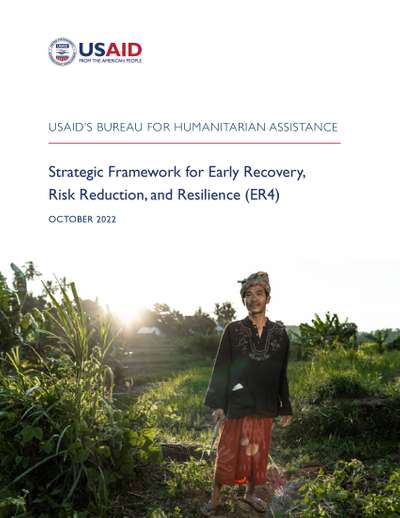USAID General Publications Strategic Framework for Early Recovery, Risk Reduction, and Resilience
Publié: 20/10/2022

USAID’s Bureau for Humanitarian Assistance (BHA) has developed this strategic framework to provide guidance to BHA and Agency staff and partners on approaches and programming1 in the areas of early recovery, risk reduction, and resilience (ER4). BHA considers the broad range of activities encompassed by ER4 programming to be integral components of humanitarian assistance and is committed to programming within the parameters of this framework.
Over the past decade, humanitarian assistance has evolved and adapted to a changing humanitarian landscape, characterized by climate change, complex and protracted crises, global migration, urbanization, and the rise of infectious disease outbreaks and global pandemics. Humanitarian assistance has thus extended beyond disaster response and traditional disaster risk reduction (DRR) activities to include a diverse set of activities characterized by innovative disaster risk management approaches.
BHA’s ER4 programming encapsulates a broad spectrum of work that can vary greatly in scope. For instance, risk reduction and early recovery activities can be relatively short in duration and very focused on certain sectors or may be longer in duration, requiring multi-sectoral approaches and multi-year investments. Meanwhile, BHA’s resilience activities, including Resilience Food Security Activities (RFSAs), are typically multi‑sectoral in approach and require multi-year investments.
This document provides a strategic framework for our ER4 work, including strategic objectives, guiding principles, definitions, and technical approaches, emphasizing the diversity of programming and approaches within the ER4 realm.